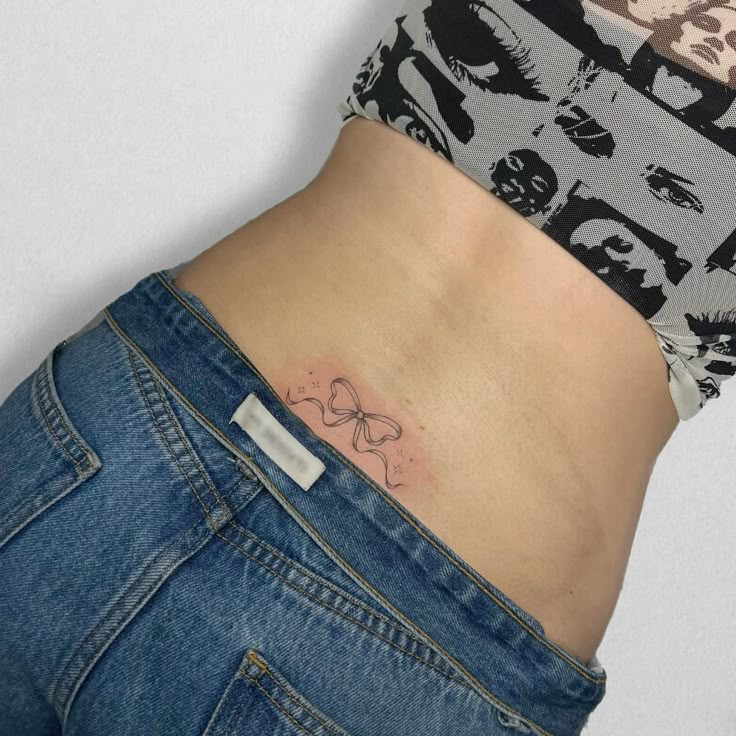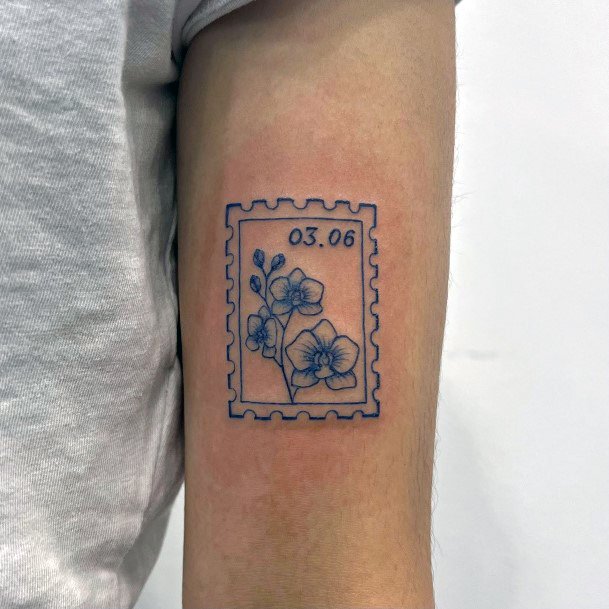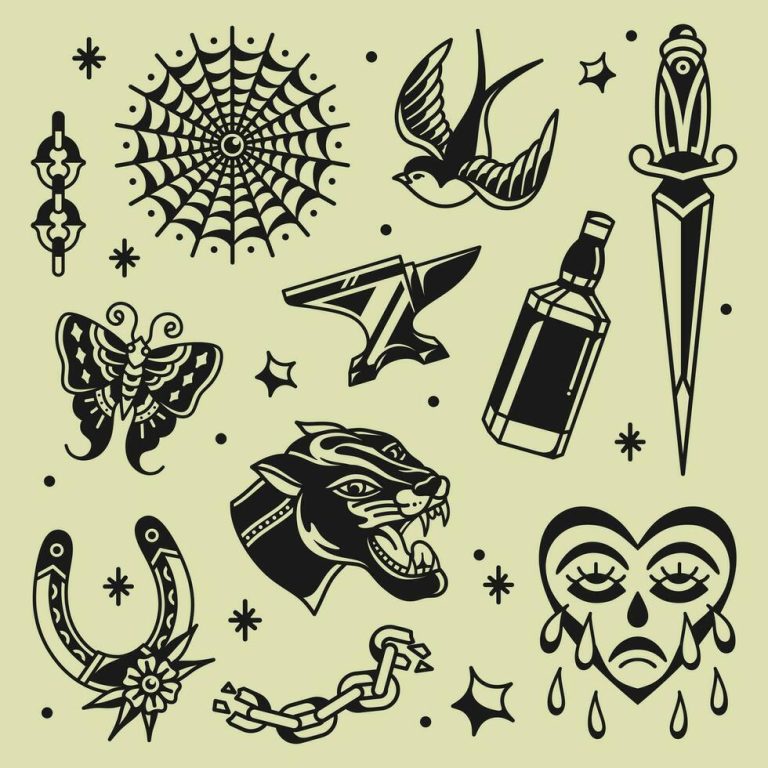
Tramp Stamp Tattoo: Design and Placement Considerations
The Origin of Tramp Stamp Tattoos
The term ‘tramp stamp tattoo’ emerged in the late 1990s and early 2000s. It refers to a tattoo placed on the lower back. This body art gained immense popularity among women during that time. Its origin is often associated with the rise of low-rise jeans and cropped tops, which provided an ideal canvas for such tattoos. However, this term now carries certain stereotypes and can be seen as derogatory.
Early designs typically featured tribal patterns or butterfly motifs. These designs were chosen for their aesthetic appeal and the ease of concealment under clothing. With tattoos becoming more mainstream, lower back tattoos became a trendy choice, especially in Western cultures. As more people embraced body art, the stigma around the placement on the lower back started to form.
The boom in popularity made the tramp stamp tattoo a cultural phenomenon. Celebrities and influencers sporting them contributed to their widespread appeal. Yet, the term itself began to carry negative connotations over time. Despite this, many choose to proudly wear their lower back tattoos, seeing them as a personal statement of beauty and individuality.
Societal Perceptions of the Tramp Stamp
Tramp stamp tattoos have faced varied reactions from society over the years. Initially, these tattoos enjoyed widespread popularity, especially among women. They symbolized self-expression and a touch of rebellion. As fashion trends changed, the tattoos’ visibility increased, leading to their mainstream acceptance. But as popularity grew, so did the judgment. The tramp stamp tattoo began to attract stereotypes. Some viewed them as a sign of promiscuity or poor taste. This was partly due to the derogatory nature of the term ‘tramp stamp’ itself.
Media portrayal also influenced public opinion. TV shows and movies often depicted characters with lower back tattoos in a negative light. This added to the stigma surrounding them. Over time, the narrative around these tattoos became less about the art and more about the supposed character of the wearer. This shift in perception made many people cautious about getting a tramp stamp tattoo. They feared being labeled or judged based on a tattoo’s location.
Despite such challenges, many tattoo enthusiasts continue to embrace the tramp stamp. They reclaimed it as a symbol of empowerment and control over their bodies. This shift in mindset reflects a broader change in attitudes toward tattoos in general. Society is gradually moving away from snap judgments based on appearance. This evolution has paved the way for discussions about body autonomy and the meaning of tattoos beyond their placement.
In sum, societal perceptions of the tramp stamp tattoo have swung from trendsetting to taboo, and now towards acceptance. This embodies the complex relationship society has with body art and individuality. People are starting to see the tramp stamp as just another tattoo choice, reflective of personal style, and not a marker of morality.

Evolution of the Tramp Stamp Trend
The evolution of the tramp stamp tattoo has been dynamic and multifaceted. From a trendy accessory of the 90s and early 2000s to a subject of mixed emotions and judgments, its journey mirrors changes in fashion and societal attitudes.
In the initial surge of popularity, tramp stamp tattoos served as a bold fashion statement. They complemented the era’s clothing styles and allowed for a playful reveal that matched the daring spirit of youth culture. Women, prominently, adopted these tattoos as a marker of femininity and sensuality.
As the 2000s progressed, the once-celebrated tramp stamp tattoo experienced backlash. The term ‘tramp stamp’ began to echo with negative undertones, shaking its once admired status. The trend’s decline was noticeable, as fewer people sought this particular placement for fear of social stigma.
Yet, not all was lost for the tramp stamp. A cultural renaissance emerged as people started to reassess tattoo culture and what body art represented. The stigma began to fade, and the tramp stamp tattoo found a new lease on life. Reinterpreted designs, imbued with personal significance and artistry, led to a nuanced revival.
In recent years, we’ve witnessed a significant shift. The tramp stamp, with its controversial history, is now embraced by some as a reclaiming of agency. Both men and women are opting for lower back tattoos, although the connotations often differ with gender.
The tramp stamp tattoo, often aligned with and sometimes challenging fashion trends, is evolving. It’s becoming less about conforming to a fad and more about asserting individual style. This trend encapsulates the growing acceptance of tattoos as a form of personal expression, beyond stereotypes and fashion statements.
In essence, the evolution of the tramp stamp trend is a testament to the tattoo’s resilience and the changing dialogue around body art. Society’s views continue to shift, allowing tattoos, including the tramp stamp, to adorn our bodies not just as a trend but as a timeless form of self-expression.
Design and Placement Considerations
When considering a tramp stamp tattoo, design and placement are crucial. The lower back is a broad canvas, offering ample room for intricate and sizable tattoos. Yet, it’s essential to consider the curvature of the spine and muscles in this area. This ensures the tattoo complements the body’s contours. Here are some considerations:
- Body Shape Adaptability: The lower back tattoo should match the wearer’s body shape. As the body moves and changes over time, the tattoo design may stretch or contract.
- Visibility and Concealment: One should think about how often they want their tattoo to show. The lower back allows for easy concealment with clothing but can also be a surprise element when revealed.
- Design Size: While large designs are popular for the lower back, small and subtle tattoos can also make a statement. The size of the tattoo should align with personal preference and the statement one wants to make.
- Pain Factor: The lower back can be a sensitive area due to the proximity to the spine and nerves. Prospective tattoo owners should prepare for a certain level of discomfort during the tattooing process.
- Longevity: Skin in the lower back area tends to age well, making it a suitable spot for long-lasting tattoos. Nevertheless, long-term skin care is vital to maintain the tattoo’s appearance.
Ultimately, anyone considering a tramp stamp tattoo should work closely with a skilled tattoo artist. The right artist will help create a design that’s not only aesthetically pleasing but also meaningful and suited to the individual’s body. And as trends evolve, so does the approach to these tattoos, with many seeking more unique and personalized designs that defy the stereotypes once connected with the tramp stamp tattoo.

Gender and Tramp Stamp Tattoos
Gender has played a key role in the perceptions of tramp stamp tattoos. Initially, these tattoos were mainly associated with women. They became symbols of femininity and sexuality. As such, they were often subject to gender-specific stereotypes and biases. Men with lower back tattoos faced a different stigma. They might be viewed as challenging traditional masculinity norms.
Despite this gender divide, the narrative is changing. Today, both men and women choose tramp stamp tattoos for personal reasons. They see them as a form of art or personal expression, free from gender constraints. This shift reflects a broader change in attitudes toward tattoos. It suggests a move away from strict gender norms in body art.
Women are reclaiming the tramp stamp tattoo as an emblem of empowerment. They are celebrating the right to decorate their bodies as they choose. Meanwhile, men are also adopting these tattoos, showing that body art transcends traditional gender roles. This change is part of a wider acceptance of individual choice. It highlights the tattoo’s evolution from a gendered statement to a universal form of self-expression.
In summary, gender considerations in tramp stamp tattoos mirror societal attitudes towards gender norms and expression. As those norms evolve, so do the meanings and acceptance of tattoos across genders, allowing everyone to express their individuality through body art.
Cultural Impact and Commentary
The cultural impact of the tramp stamp tattoo is far-reaching. It mirrors shifts in societal values and fashion. Early on, the tramp stamp echoed a wave of boldness in personal style. As ‘tramp stamp’ became a household term, it shaped dialogue around body art. It sparked debates on personal choice versus societal norms. This tattoo’s journey from trendy to controversial and back again speaks volumes.
The commentary around tramp stamp tattoos often focuses on their supposed morality. Critics have linked them to promiscuity and bad taste. Yet, many see such views as unfair and judgmental. Supporters argue that these tattoos are simply a form of expression. They state that the art should not imply character traits of the wearer.
Cultural critics and feminists have weighed in too. Some view the tattoo as a reclaiming of body autonomy, particularly for women. They celebrate the tramp stamp’s potential to subvert traditional gender norms. On the other hand, the media has sometimes perpetuated negative stereotypes. This has influenced the public’s perception, but change is on the horizon.
As culture evolves, so does the interpretation of the tramp stamp tattoo. It’s moving from a sign of the times to a mark of individuality. The tattoo is becoming a piece of history in the story of body art. This marks its significance beyond the pattern inked on skin. The tramp stamp tattoo is a statement about change, choice, and reclaiming identity.

Reclaiming the Tramp Stamp: A Modern Perspective
The term ‘tramp stamp tattoo’ has evolved from its past. Today, a fresh perspective is emerging. People now reclaim these tattoos as symbols of personal choice. They see them as art, and a form of self-expression. The negative labels are fading. The modern view focuses on significance and creativity. Artists craft unique designs that have personal meaning. Wearers showcase these tattoos with pride and confidence.
The tramp stamp tattoo is shedding its stigma. It’s becoming a statement of empowerment, especially for women. They define what it means to have a tramp stamp today. Men are also part of this shift. They are rejecting the idea that tattoos must fit a gendered mold. This challenges old notions and opens up new conversations about personal freedom.
The era of judgment based on a tattoo’s placement is ending. Now, it’s about the art and the story it tells. The reclaimed tramp stamp tattoo speaks of a journey. It is one of breaking free from labels and stereotypes. It is about wearing one’s history and choices with honor.
In conclusion, the tramp stamp tattoo is taking on new life. It’s viewed through a lens of modernity and self-determination. As individuals reinterpret this tattoo form, it gains respect and distance from its contentious origins.
Future of Tramp Stamp Tattoos in Fashion and Society
With the evolving perceptions of tramp stamp tattoos, their future in fashion and society is bright. People now see these tattoos through a lens of individuality and choice. As fashion cycles come and go, the adaptability of the tramp stamp tattoo endures. It is less about a fleeting trend and more about a personal statement.
The tramp stamp tattoo has potential for continued reinvention. It can blend with emerging fashion trends while retaining personal meaning. As societal norms around body art relax, this can lead to greater creativity in tattoo designs. Tattoo artists might innovate with new styles that challenge the previous stigma attached to the tramp stamp.
Inclusive attitudes in fashion are also shaping the future of these tattoos. The industry increasingly values diverse expressions of beauty and identity. This shift is likely to open doors for the tramp stamp tattoo to re-enter mainstream fashion. It could be showcased in different ways, contributing to a broader understanding of body art.
The tramp stamp tattoo could serve as a conversation starter. It can promote dialogues about autonomy, gender roles, and self-expression. As such, it stands at the forefront of a cultural shift in how tattoos contribute to personal narratives.
Ultimately, the tramp stamp tattoo’s future is tied to ongoing cultural conversations. It will mirror the collective values and attitudes of the time. As individuals embrace a variety of tattoo placements, the tramp stamp tattoo may again find its place as a celebrated art form.

